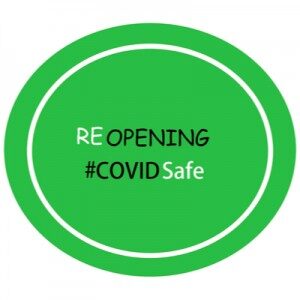Since the onset of the novel Coronavirus 2019 (COVID), everyday life has been upended for everyone. Nonprofits, their boards, and their members haven’t escaped the disruption, but life (and compliance with nonprofit law!) must go on.
One serious challenge in the age of COVID is how, or whether, to hold in-person meetings. We have received a number of questions from clients about their ability to hold virtual meetings for directors and members. While many states have relaxed rules around virtual meetings, nonprofits must continue to be vigilant. In this post I briefly discuss how nonprofits can make sure they are able to hold virtual meetings while complying with applicable law.
Meetings are important!
Board and member meetings serve important functions. Membership meetings allow the members to elect directors and weigh in on important issues facing the nonprofit. Directors’ fiduciary duties continue, notwithstanding the pandemic – their duties include effective oversight of the nonprofit’s activities and management. While some nonprofit activity has ground to a halt, other organizations are busier than ever, being asked to cope with the intersecting challenges of a pandemic, economic recession, and civil rights movement taking place at the same time. Board members cannot put their fiduciary duties on hold because in-person meetings are more difficult. Directors have to find a way to carry out their normal board activities in these abnormal times. Virtual meetings are one tool.
Check your documents!
Before the Board can arrange a virtual board or member meeting, the Board needs to confirm that virtual meetings aren’t prohibited by the nonprofit’s own rules. Any restriction on virtual meetings would typically be spelled out in the organization’s bylaws. Most nonprofits formed in the past ten years will likely have language that expressly allows for virtual meetings, or will be silent on virtual meetings. If your organization has members, check the sections of the bylaws that apply to member meetings and then check the section that deals with board meetings – sometimes there are different rules! Also, if your bylaws reference Robert’s Rules of Order as rules applicable to the organization, you should also review those rules with respect to the conduct of virtual meetings.
Unfortunately, some bylaws specifically require in-person meetings. If your bylaws specifically require in-person meetings, the organization cannot move forward without making a revision that allows virtual meetings. Bylaws revisions are important to get right procedurally – I recommend checking with counsel to ensure that any bylaws revisions are properly handled.
Check the law!
Assuming the bylaws do not prohibit virtual meetings, you should check applicable state law to see how state law deals with virtual meetings. The law that applies depends on where the nonprofit is legally incorporated. That can differ from where the nonprofit’s headquarters is located or where it conducts its activities. Be sure to check the appropriate state rules (or get your favorite attorney to check for you)!
State laws vary, but in general they permit virtual board meetings if the nonprofit’s bylaws don’t prohibit such meetings. State laws with regards to member meetings tend to favor in-person meetings, but some states permit virtual meetings. Look for other requirements – some state laws specify that all participants in the virtual meeting must be able to hear and be heard throughout the meeting. Other states have different participation requirements for members and directors.
The “hear and be heard” requirement is tricky when dealing with large meetings (especially in the member context). Logistically, many organizations use the “mute” function of a videoconferencing app for large meetings. The mute function guarantees that there are no unexpected or unintentional disruptions during the meeting. However, in order to comply with state law, your participants need to be able to voice their opinions throughout the meeting. If they’re muted by the organizer, your meeting may technically be in violation of state law unless members are able to un-mute themselves. I recommend asking members to voluntarily mute themselves, or if muted by the organizer, allow users to un-mute themselves if they would like to contribute to the conversation. The organizer could also mute participants for the presentation of each agenda item, then the floor can be opened for discussion for each agenda item so all participants have a chance to weigh in on each piece of business before the organizer mutes the participants again.
Some states require a physical location to be designated in the notices for the meetings, even if they are to be held virtually. I generally recommend designating the organization’s principal office, but clarifying that all aspects of the meeting will be virtual.
Finally, check to see if the state has issued special guidance related to meetings. Many state regulators and governors have attempted to loosen restrictions on virtual meetings during COVID, to the extent they are permitted by law. Their guidance may affect whether you need to make any changes to your organization’s bylaws. For instance, New York’s Charities Bureau issued special guidance with regards to virtual meetings early in the pandemic. The notice discussed temporary changes to New York law during the pandemic allowing annual members’ meetings to take place virtually. The state also provided helpful information to guide organizations as they prepare to carry out a virtual meeting for the first time.
Be Careful!
To ensure that your organization doesn’t become too relaxed with its compliance around meetings, I offer the following cautionary tale. Just as directors must continue to observe their fiduciary duties, state regulators are keeping an eye on nonprofits during the pandemic. In July, the Pennsylvania Attorney General filed a lawsuit against Lincoln University’s Board of Trustees for failing to follow statutory and internal policies and procedures with regards to their meetings. While there were a number of other issues,** a large portion of the lawsuit relates to two main problems: (i) a portion of the Board was unable to participate in a Zoom when their microphones were muted by the host; and (ii) the Board allegedly failed to comply with the notice provisions in its own bylaws.
** The main dispute relates to the ability for newly designated Trustees to be seated without approval of the Board’s Nominations Committee. But the AG’s hook to bring the suit related to relatively dry issues of governance compliance.
Conclusion
While boards and members should make use of the tool of virtual meetings, it’s important to do so while complying with the nonprofit’s internal governance and applicable state law. If virtual meetings are new to your organization, it’s a good idea to check in with your legal counsel to make sure you’re doing everything right.
- Perlman & Perlmanhttps://perlmanandperlman.com/author/nancyisrael/
- Perlman & Perlmanhttps://perlmanandperlman.com/author/nancyisrael/
- Perlman & Perlmanhttps://perlmanandperlman.com/author/nancyisrael/
- Perlman & Perlmanhttps://perlmanandperlman.com/author/nancyisrael/
















